
IMPORTANT NOTICE !!
Read the enclosed instructions carefully before attempting to install this door. Pay close
attention to all warnings and important safety notices.
This manual MUST be attached to the wall in close proximity of the door.
DS-50/DS-75/DS-100 MINI ROLL-UP DOORS
INSTALLATION INSTRUCTIONS
©Copyright 2004 Wayne-Dalton
P/N 300847, DOC #101-0117 REV 03

2
CAUTION
CAUTION
WARNING
IMPORTANT!
HINT:
NOTE:
IMPORTANT SAFETY NOTICES
Read the enclosed instructions carefully before attempting installation. If there are any
questions about any of the procedures, do not perform the work. Instead, have a trained door
technician do the installation or repairs.
1. Operate the door ONLY when it is properly adjusted and free of all obstructions.
2. The door is constantly under EXTREME SPRING TENSION. Repairs, adjustments, installation and
removal, ESPECIALLY of SPRINGS AND RELATED PARTS, are dangerous. Such work should be
performed ONLY by trained door technicians.
3. DO NOT PERMIT children to play with the door. Children could get caught between the door and the
floor causing severe injury or death.
4. Avoid standing in the open doorway or walking through the doorway while the door is moving. One could
get caught between the door and the floor causing severe injury or death.
5. Should the door become hard to operate or completely inoperative, it is recommended that a trained door
technician correct the problem to prevent possible injuries or door damage.
6. Avoid installing the door on windy days. The door could fall causing personal injury or door damage.
7. To prevent injuries due to loose components, at least monthly check all bolted connections to make sure
they are secure.
8. To prevent injuries, never place hands or fingers between the curtain and the guides while the door is being
operated.
9. This manual is not intended to provide "take-down" instructions for existing doors. Consult your local door
agency if this is required, before new doors are to be installed.
10. Thoroughly familiarize yourself with the building codes in your region before initiating work.
11. Wear the proper protective safety gear at all times when installing, adjusting, and/or repairing doors.
12. Use a 2-person (or larger) crew for installing, adjusting, and/or repairing larger doors.
13. Definitions of key words used in this manual are as follows:
This is the safety alert symbol. It is used to alert you to potential personal injury
hazards. Obey all safety messages that follow this symbol to avoid possible injury
or death.
WARNING indicates a potential hazardous situation which, if
not avoided, could result in serious injury or death.
CAUTION indicates a potentially hazardous situation which, if
not avoided, may result in minor or moderate injury.
CAUTION used without the safety alert symbol indicates a
potentially hazardous situation which, if not avoided, may
result in property damage.
IMPORTANT! indicates a required step for safe and proper
door operation.
NOTE: indicates information assuring proper installation of the door.
HINT: indicates a suggested step to simplify installation based on experience.

3
INTRODUCTION
This manual's main function is to assist the installer in correctly installing the doors to ensure safe operation.
Compliance with building codes, enforced in your area, is required.
All Wayne-Dalton DS-50, DS-75, and DS-100 Mini Roll-Up Doors follow these general instructions. Additional
installation information for the specific door shipped is found with the packing slip and on supplementary drawings.
There are also bolt and small sealed parts bags with accessory lists, describing proper application.
PREPARATION
Read the installation instructions thoroughly to become familiar
with the names of the various components and their relation to each
other. It is necessary for the installer to determine the following:
Type of jamb material (wood, masonry, or steel) on which
the door guides will be mounted.
The dimensions for the opening width, opening height,
headroom, and side room.
Type of support brackets provided (bearing bracket or
Tension-Pro™ bracket).
MATERIAL
Inspect your door for possible damage or shortage of parts. Immediately report any shortages to your door supplier,
or transit related damage claims to your freight carrier.
CLEARANCES
Compare the door opening dimensions and available clearances against the dimensions listed on the packing slip,
taking special note of the opening width and height.
TOOLS
Commonly used tools for proper installation are:
Electric drill with 3/8" or 1/2" chuck with nut driver and drill bits.
Masonry drill or impact hammer and bits.
Ladders and/or scaffolding.
Hammer and pliers.
Large Pipe Wrench (if Tension-Pro bracket).
Center punch and Screwdrivers.
Wrenches, vise grips, and C-clamps.
Tape measure and a water level.
FASTENER TABLE
Jamb Condition Bracket Fasteners Guide Fasteners
Wood
5/16 x 1-1/2” Lag Screw 5/16 x 1-1/2” Lag Screw
Masonry
5/16 x 1-1/2” Wedge Anchor 1/4 x 1-3/4” Tapcon
Steel
1/4 x 3/4” Self Drilling
Screw
1/4 x 3/4” Self Drilling
Screw

4
STEP 1 UNPACKING DOORS
Before removing the door from any packaging, inspect the packaging for
visible signs of damage. If damage is noted, file a freight claim with the freight
company immediately. Remove the door from the packaging.
Do not cut tape that holds door
in a roll. You will be told in STEP
#7 when to cut the tape.
No guarantee will be given by Wayne-Dalton if the door is not installed as
instructed. Please review all instructions thoroughly before starting installation. For proper operation, follow these
instructions step by step.
Right and Left Hand is determined by facing the door opening, on the coil
side.
STEP 2 CHECKING THE DOOR OPENING
Verify that dimensions W and H (see below) match those recorded on the door packing slip. Consult the factory if
the actual opening width is greater than that shown on the packing slip by more than 1-1/2 inches. Check to make
certain that the door opening is square and plum and that the floor is level. Check to be certain there is sufficient
clearance from the opening to the ceiling and the sidewalls (see Required Clearances below).
REQUIRED CLEARANCES - MINIMUM INDICATED
OPENING HEIGHT HEADROOM (A) SIDE ROOM (B)
UP TO 6’8” HIGH 13” 4”
FROM 6’8-1/4” TO 8’ HIGH 14” 4”
OVER 8’ HIGH 16” 4”
IMPORTANT!
NOTE:

5
STEP 3 INSTALLING GUIDES
Position the left hand guide 3/8” from the edge of the left hand jamb and loosely clamp in place. Using a level,
adjust the guide so that it is plumb and tighten the clamp.
Measure the exact curtain width of the door and add 7/8” to obtain the inside of guide to inside of guide
measurement. Use this measurement to locate the right hand guide. Loosely clamp the right hand guide to the jamb.
Plumb the guide and tighten the clamp.
Using a string and level, ensure that the tips of the left and right hand guides are level to each other. Shim guides as
needed. Double check the inside of guide to inside of guide measurement at top, middle, and bottom to ensure that
the guides are plumb and parallel. Fasten both guides to the jambs using the fasteners provided (See Fastener Table
in the front of this manual).
Inside of guide to inside of guide measurement must be held
to ensure proper door operation.
Use of any other fasteners than those provided must be
approved by Wayne-Dalton and cannot be of lesser diameter
or grade.
STEP 4 INSTALLING BRACKETS
Install the brackets to the outside of the guides (away
from the opening) using two 1/4-20 x 9/16” track bolts
in the two holes at the top of the guides, as shown.
Loosely install the 1/4-20 flange nuts on the bolts to
hold the brackets in place. Check that the brackets are
straight and square with one another, shimming if
necessary, and fasten the brackets to the wall using the
fasteners provided (See Fastener Table in the front of
this manual). Tighten the flange nuts on each bracket.
Install the bottom bar stops to the guides as shown using 1/4-20 x 5/8” carriage bolts and flange nuts. Leave the
fasteners loose to allow the bottom bar stops to pivot out of the way of the bottom bar angle when the curtain will be
pulled into the guides. You will be instructed to tighten the bottom bar stop fasteners in STEP #7.
IMPORTANT!
IMPORTANT!

6
HINT:
STEP 5 LIFTING THE CURTAIN ASSEMBLY
Curtain assembly is heavy. Allowing curtain assembly to fall
while lifting, could result in severe or fatal injury.
To avoid severe or fatal injury, never walk, stand, or work
below curtain assembly before it is secured to support
brackets.
The left hand end of the curtain assembly (when
installed) will be the end with the spring. Lift the
curtain assembly up to the brackets and insert the left
hand axle end into the large hole in the left hand
bracket. Be sure that the axle collar rests against the
bracket. While continuing to support the curtain
assembly, insert the right hand axle end into the right
hand bracket in the same manner. It may be necessary
to gently pry the right hand bracket out to allow
clearance for the curtain assembly axle end. Secure
the curtain assembly in position by installing the
cotter pins through the holes in each axle end. Once
installed, bend the ends of both cotter pins to secure
in place.
If door is equipped with a Tension-Pro™ bracket, see STEP #12
for assembly instructions.
STEP 6 ATTACHING SPRING
Rotate curtain assembly so that the bottom bar is at the top of
the curtain roll. While keeping the curtain from rotating,
carefully stretch the spring end to the bracket to determine the
bracket hole nearest to the loop in the spring end. Position the
5/16-18 x 1” hex head bolt and flat washer in the spring loop
and stretch the spring to insert the bolt into the previously
determined bracket hole. Loosely install the lock washer and nut
on the outside of the bracket to hold the spring stretch. Rotate
the spring until it is centered on the bracket and securely tighten
the spring attachment bolt.
(Axle Pin installed in step #5 omitted from view for clarity)
For an easier way of installing the spring attachment bolt, if the installation
permits, use vice grips to temporarily secure spring loop to bracket.
WARNING
WARNING
IMPORTANT!

7
STEP 7 PRE-TENSIONING THE DOOR SPRING
Spring tension can cause curtain assembly to rotate rapidly,
possibly resulting in severe or fatal injury. To prevent such
injury, securely hold curtain assembly to prevent rotating.
Starting with the bottom bar at the top of the curtain roll, apply
two complete turns of pre-tension to the spring by rotating the
curtain roll in the direction shown. The amount of tension
required may vary slightly. Final adjustment, if necessary, will be
made in STEP #9.
Cut the tape that holds the curtain in a roll and gently pull the
curtain down into the guides on both sides until the bottom bar is
below the bottom bar stops. Do not pry on the bottom bar stops to
get bottom bar past the stops. Instead, loosen fasteners until
bottom bar angle easily clears stops. If the door has a tendency to
close, secure it in position using clamps. If the door has a
tendency to rise, secure it in position using a wood prop.
Securely hold curtain assembly until bottom bar stop fasteners
have been tightened. If not securely held, curtain could rotate,
possibly causing severe or fatal injury.
With the door kept from moving, tighten the bottom bar stop fasteners on both guides. Remove clamps or wood
props.
STEP 8 LUBRICATING AND ADJUSTING THE GUIDES
Lubricate the insides of guides with weather resistant lubricating spray. Move the door up and down to check for
proper operation. Adjust the guides if necessary to allow for proper clearance and operation.
If door is difficult to move up or down due to spring imbalance, continue
on to STEP #9 and return to STEP #8 once springs are properly adjusted.
HINT:
WARNING
WARNING

8
STEP 9 CHECKING AND ADJUSTING SPRING BALANCE
Spring tension can cause curtain assembly to rotate rapidly,
possibly resulting in severe or fatal injury. To prevent such
injury, securely hold curtain assembly to prevent rotating.
Move the door up and down to check for proper spring tension. If
the door lowers easily and raises hard, more spring tension is
required. If the door lowers hard and raises easily, less spring
tension is required. If a tension adjustment is necessary, secure the
door in position and remove the bottom bar stops. Carefully roll
the curtain all the way up without letting go of the bottom bar. Tie
a rope around the curtain roll and slowly rotate the curtain roll in
the opposite direction as tension was applied until spring is
neutral. Change the location of the spring attachment bolt in the
required direction as shown. Repeat STEPS 6, 7, 8, and 9. See
STEP #12 for Tension-Pro™ bracket spring tension adjustment.
Securely hold curtain assembly until bottom bar stop fasteners
have been tightened. If not securely held, curtain could rotate,
possibly causing severe or fatal injury.
STEP 10 INSTALLING LIFT HANDLE, STOP CLIPS AND OPTIONAL SLIDE BOLT LOCKS
Install a lift handle in the center of the bottom bar using 1/4-20 x
5/8” carriage bolts and flange nuts, placed so the nut is on the coil
side, or inside of door as shown. If the opening width is greater than
5 foot and the door does not have slide bolt locks, install a second lift
handle on the right hand side of the bottom bar (outside looking in).
Install 1/4-20 x 5/8” carriage bolts and flange nuts in all remaining
bottom bar holes.
I: DS-75 Mini ‘Z’ Stop-Clip Attachment:
For DS-75 mini doors, install the ‘Z’ stop-clip as shown
on the right. Since the stop-clip has a retaining tab on
top, it only requires one bolt to secure it to the bottom
bar. Repeat assembly procedure for both sides.
WARNING
WARNING
(4) ¼ - 20 carriage bolts
(4) ¼ - 20 flange nuts
(2) ‘Z’ stop-clips

9
II: DS-50 & 100 ‘C’ Stop-Clip Attachment:
For doors with an aluminum bottom bar, a ‘C’
stop-clip will need to be installed. Only one bolt
is required to secure the stop-clip to the bottom
bar when attaching a lift handle on that side.
Repeat assembly procedure for both sides.
III: ‘C’ Stop-Clip w/ Inside Slide Bolt Attachment:
Install slide bolt locks, if provided, as shown. The
bottom bar will have (4) carriage bolts & flange nuts pre-
attached. Verify that the flat sides of the nuts are
horizontal to the bottom bar. This ensures smooth
operation of the slide bolt. Place the slide bolt lock so
that the slot rides on the flange nuts. Then, add the stop-
clip and attach, using the flanged nuts. Repeat assembly
procedure for both sides.
Failure to properly install stop-clips to the bottom of the door may
result in serious injury or death
STEP 11 INSTALLING OPTIONAL TOP DRAFT STOP
Close the door and secure it in the down position. Use a pencil to
mark the door panel corrugation that is parallel with the bottom of
the header/lintel from the outside of the opening. If this corrugation
protrudes below the header, mark the one just above. Open the door
until the marked corrugation is accessible. Stretch the top draft stop
across the door and attach it to the curtain on the marked corrugation
with the self-drilling screws provided, locating the screws on 12”
centers. Trim the top draft stop to clear the guides if required. When
the door is closed, the draft-stop should seal on the header.
Top draft stop may not seal on the
header if not installed on a
corrugation as shown.
NOTE:
WARNING
(2) ‘C’ stop-clips
(4) ¼ - 20
flange nuts
(4) ¼ - 20 carriage bolts
(
2
)
inside slide
(
4
)
¼ - 20 flan
g
e
(
2
)
‘C’ sto
p
-cli
p
s
(4) ¼ - 20 carriage bolts
(4) ¼ - 20 flange nuts
*pre-attached to btm bar

10
STEP 12 INSTALLING THE OPTIONAL TENSION-PRO SPRING ADJUSTMENT
BRACKET
STEP #12a: Install the Tension-Pro™ bracket on the left hand side of the curtain assembly per STEP #4 & #5 in
this manual. Insert cotter pin through hole in the axle end. Do not use large washer (shown in step #5) on the
Tension-Pro™ bracket side axle end. Bend the ends of the cotter pin to secure in position.
STEP #12b: Stretch and attach spring end to the spring holder plate of the Tension-Pro™ bracket. Tighten the
flange nylon lock hex nut to keep spring in place.
STEP #12c: Using a pipe wrench, rotate the large nut clockwise 2 turns to pre-tension the spring. Then, lubricate
and adjust guides.
STEP #12d: Test door operation to determine if spring balance requires adjustment. Adjust tension as needed per
the following instructions.
Spring tension can cause severe or fatal injury. To avoid injury,
repairs/ adjustments must be made by a trained door technician.
Spring tension increases as door closes. To avoid possible
Injury, door must be fully open when adjusting spring tension
.
Pipe wrench interference can prevent pawl from engaging with
ratchet gear. Always adjust tension one “CLICK” (gear tooth) at a
time. Reposition wrench for each adjustment. Failure of pawl to
engage with ratchet gear can cause severe or fatal injury.
Contact with rapidly rotating ratchet gear can cause severe or fatal
injury. If wrench slips when decreasing tension, release pawl
immediately to avoid injury. Do not secure pawl in the disengaged
position.
WARNING
WARNING
WARNING
WARNING

11
To Increase Spring Tension:
Move the door to the fully open position and place clamps on the guides to prevent door from closing. Using a large
pipe wrench, grip the tensioning hex plate and rotate the ratchet gear assembly in the direction indicated above until
an audible “CLICK” is heard (one gear tooth). Operate the door to determine if the spring tension increase was
sufficient. Repeat spring tension increase procedure until door is properly balanced.
To Decrease Spring Tension:
Move the door to the fully open position and place clamps on the guides to prevent door from closing. Using a large
pipe wrench, grip the tensioning hex plate and remove the spring tension force from the pawl. Grip the pawl
retention screw and pull the pawl in the direction indicated above to keep it disengaged. Slowly release spring
tension held with the pipe wrench, allowing the ratchet gear to begin to rotate in the direction indicated above. The
spring tension will rotate the gear in the proper direction. Once the stop face of the previously engaged tooth has
passed the tip of the pawl, release the pawl to allow it to engage the next tooth. Operate the door to determine if the
spring tension decrease was sufficient. Repeat spring tension decrease procedure until door is properly balanced.
STEP #12e: Once spring tension has been adjusted and the door is properly balanced, lock the pawl in position by
tightening the pawl retention screw until it penetrates the bracket. Test that the pawl is locked in position by
attempting to add one(1) “CLICK” of tension. If properly locked, the ratchet gear will not be able to rotate. If
ratchet gear rotates, adjust tension back to previous position, verify that the pawl retention screw is lined up with the
hole in the bracket, and tighten the pawl retention screw. Return to STEP #10 in this manual and continue with the
door installation.
If pawl retention screw does not penetrate hole in Tension- Pro
bracket, spring tension could be released during door
operation, allowing door to close rapidly, possibly causing
severe or fatal injury.
The pawl retention screw, if not properly aligned with the hole
in the Tension-Pro bracket, can cause pawl to disengage. To
prevent severe or fatal injury from unexpected release of
spring tension, do not drive retention screw with screw gun.
To prevent severe or fatal injury, keep fingers, hands, arms
and loose clothing away from all moving mechanisms.
WARNING
WARNING
WARNING

12
Roll-Up Sheet Door
LIMITED WARRANTY
Wayne-Dalton
P.O. Box 67- Mt. Hope, Ohio 44660
The Manufacturer warrants the ROLL-UP SHEET DOOR and hardware fittings for a period of ONE YEAR from the time of
delivery against any defects in workmanship or material. Manufacturer shall, upon notification, correct such nonconformity at its option, by
repairing or replacing any defective part or parts.
NO EMPLOYEE, DISTRIBUTOR, OR REPRESENTATIVE IS AUTHORIZED TO CHANGE THE FOREGOING
WARRANTIES IN ANY WAY OR GRANT ANY OTHER WARRANTY ON BEHALF OF MANUFACTURER.
The Manufacturer shall not be responsible for any damage resulting to or caused by its products by reason of installation, improper
storage, unauthorized service, alteration of products, neglect or abuse, or attempt to use the products for other than the customary usage or
for their intended purposes. The ROLL-UP SHEET DOOR warranty becomes null and void if other than Manufacturer’s specified holes are
drilled. The above warranty does not cover wear or any damage beyond Manufacturer’s control or replacement labor.
THIS WARRANTY COVERS A COMMERCIAL PRODUCT, THE FOREGOING WARRANTIES ARE IN LIEU OF ALL
OTHER WARRANTIES AND NO REPRESENTATIONS, GUARANTEES, OR WARRANTIES, EXPRESSED OR IMPLIED,
(INCLUDING, BUT NOT LIMITED TO, THE WARRANTY OF MERCHANTABILITY OR FITNESS FOR PARTICULAR PURPOSE),
ARE MADE BY MANUFACTURER IN CONNECTION WITH MANUFACTURE OR SALE OF ITS PRODUCTS.
Claims for defects in material and workmanship covered by this warranty shall be made in writing to the dealer from whom the
product was purchased within the warranty period. Manufacturer may either send a service representative or have the product returned to
the Manufacturer at Buyer’s expense for inspection. If judged by Manufacturer to be defective in material or workmanship, the product will
be replaced or repaired at the option of Manufacturer, free from all charges except authorized transportation and replacement labor.
THE REMEDIES OF BUYER SET FORTH HEREIN ARE EXCLUSIVE AND ARE IN LIEU OF ALL OTHER REMEDIES.
THE LIABILITY OF MANUFACTURER, WHETHER IN CONTRACT, TORT, UNDER ANY WARRANTY, OR OTHERWISE,
SHALL NOT EXTEND BEYOND ITS OBLIGATION TO REPAIR OR REPLACE, AT ITS OPTION, ANY PRODUCT OR PART
FOUND BY MANUFACTURER TO BE DEFECTIVE IN MATERIAL OR WORKMANSHIP. MANUFACTURER SHALL NOT BE
LIABLE FOR COST OF REMOVAL OR INSTALLATION OR SHALL NOT BE RESPONSIBLE FOR ANY DIRECT, INDIRECT,
SPECIAL, OR CONSEQUENTIAL DAMAGES OF ANY NATURE.
This warranty gives you specific legal rights which may vary from state to state. However, some states do not allow limitations on
how long an implied warranty lasts or the exclusion or limitation of incidental or consequential damages, so the above limitations or
exclusions may not apply to you.
Wayne-Dalton
Door & Systems Division
2589 County Road 168
Dundee, OH 44624
1-800-795-5095

13
Limited Warranty for Paint
on the following Wayne-Dalton products
Roll-Up Doors
Model Nos. • DS 50, • DS 75, • DS 100, • DS 200, • DS 350
Interior Systems
Wayne-Dalton
Door & Systems Div.
2589 County Road 168
Dundee, OH 44624
1-800-795-5095
• Filler Panels –corrugated and flush
• Cor-O-Doors – corrugated and flush
• Swing Doors – corrugated and flush
• All angle and channel associated
with the interior system
• Roll-Up Frames
• Cor-O-Wall
• Mod-U-Wall
• Locker Doors
• Hallway Soffit
• Entry Soffit
• Burglar Bars
• Mid-Span Brace
• Mullions
A. Party Receiving Warranty.
The following limited warranty covers the paint on the Products listed above, but not paint on any
installation hardware unless expressly included above in the description of the Product. This limited warranty is
extended solely to the party that, at the time the Product is installed, owns the structure where the Product is
installed (“Original Owner”).
B. Basic Coverage.
Owner is hereby advised that paints, including the paint used on the Product, will to some extent change
color and otherwise change appearance over time in outdoor installations and that such changes may not be uniform
between painted surfaces which are not equally exposed or positioned.
Manufacturer warrants, subject to the conditions, limitations, and exceptions specified in this document, that
the paint on the Product will resist normal weathering sufficiently to comply as follows:
(a) for a period for twenty-five (25) years, with the performance standards listed below for film
integrity; and
(b) for the period of years shown for each Product color in Manufacturer’s separate Color Chart,
with the performance standards listed below related to chalking and color change.
In all cases the warranty period runs from the time the Product was manufactured. The performance standards
designated below, under Chalking and Color Change, apply exclusively to Product installed in the northern
hemisphere north of the 15° parallel of latitude; these two standards do not apply if the Product is installed south of
such latitude:
Film Integrity: The paint on the Product will not peel, crack, check, or flake to an extent that is apparent on ordinary
outdoor visual observation.
Color Change: The paint on surfaces of Product installed vertically will not change color more than 5 NBS (Hunter)
units, and surfaces of Product not installed vertically will not change color more than 7 NBS (Hunter) units,
following field installation. The color measurements are to be made per ASTM D 2344 and only on clean surfaces
after removing surface deposits and chalk per ASTM D 3964.
Chalking: Paint on surfaces of Product installed vertically will not chalk more than a number 8 rating, and surfaces
on Product not installed vertically will not chalk more than a number 6 rating, when measured per ASTM D-4214,
Method A.
C. Limitations and Exceptions.

14
This limited warranty applies to the effects of weathering and does not apply to other causes of degradation,
such as in the case of (by way of example and without limitation):
(1) Painted surfaces on Product which has been subject to scratching or abrasion or impact (including
without limitation “paint rub” occurring in metal to metal contact and movement); has been abused, altered,
modified, used in a manner not originally intended, or stored in a manner contrary to instructions of Manufacturer or
accepted industry practice; is damaged due to moisture entrapment; is stored or installed in a manner which allows
standing water on the paint or is stored or installed in any chemically aggressive environment containing fumes, ash,
cement dust, carbon black, salts, or other chemicals (whether naturally occurring or caused by man); is stored or
installed in an environment that includes a high degree of humidity, sand, dirt, or grease (whether naturally
occurring or caused by man); is stored or installed in a manner which allows contact with animals and/animal waste
or the decomposition products of animal waste; is stored or installed in an area, or in such a manner, that damage
occurs due to poor air circulations; is stored or installed in area which is subject to fallout from copper, lead, nickel,
or silver mining or refining operations; has suffered any damage caused by sudden acts of God or by radiation,
explosion, fire, impact, or other violent forces.
(2) Painted surface on Product which has been installed within one thousand meters of salt water or other
marine environment.
D. Remedy.
Any claim under this limited warranty must be made in writing within the applicable warranty period to the
dealer from which the Product was purchased (or if the dealer is no longer in business, then to Manufacturer).
Manufacturer may require Owner to supply a video and/or photographs of the claimed defect and/or may require
that Owner return the Product at Owner’s expense to Manufacturer for inspection. Owner agrees to cooperate with
any representative sent by Manufacturer and/or by the paint producer and to give such representative full access to
the Product with the claimed defect and the location of its installation and/or storage. If Manufacturer determines
that the claim is valid under the terms of the limited warranty, Manufacturer and/or its warrantor will make
arrangements for and will bear the full cost of labor and material to replace or refinish the defective portion of the
Product. The decision about whether to remedy a defect through replacement or refinishing will be made by
Manufacturer in its sole discretion. Any refinishing of a defective portion will be done in accordance with standard
industry practice in order to provide a uniform appearance with the remainder of the Product. Any replacement or
refinishing arranged by Manufacturer or its warrantor will be covered by and subject to the terms, conditions,
limitations, and exceptions of this limited warranty, provided that the replaced or refinished portion will be deemed
to have been painted on the date the original material for the Product was originally painted; and this limited
warranty will expire at the same time as if there had been no defect. In the event that Manufacturer and Owner ever
agree to, or a claim is otherwise resolved by, a method in which Manufacturer or its warrantor do not voluntarily
replace or repair the part of the Product claimed to be defective, then any replacement or repair of such part made by
any party or person will not be covered by this limited warranty or any other warranty from Manufacturer.
E. Limitations on Remedies and Liability.
THE REMEDIES FOR OWNER DESCRIBED IN THIS LIMITED WARRANTY ARE EXCLUSIVE and
take the place of any other remedy. Manufacturer’s liability, whether in contract or tort, under warranty, product
liability, or otherwise, will not go beyond Manufacturer’s obligations to repair or replace, at it option, the portion of
the Product which is defective under this limited warranty. MANUFACTURER WILL NOT UNDER ANY
CIRCUMSTANCES BE LIABLE FOR SPECIAL INCIDENTAL, OR CONSEQUENTIAL DAMAGES, including
(but not limited to) damage or loss of other property or equipment, loss of profits or revenues, business or service
interruption, cost of capital, cost of purchase or replacement of other goods, or claims of third parties for any of the
foregoing.

15
F. Other Terms.
This limited warranty is made to the Original Owner, exclusively, and not to anyone who or which
subsequently owns or possesses the structure where the Product has been installed. This limited warranty is not
assignable or otherwise transferable. It will not pass to another person that acquires ownership of the structure on or
in which the Product is installed; and this limited warranty does not apply to any failure or defect occurring after the
structure in or on which the Product is installed is transferred from the Original Owner to any other person.
This limited warranty does not apply to any prior sales that Manufacturer might have made where
Manufacturer did not explicitly include this document of limited warranty in such sale.
The rights and obligations of Manufacturer and Owner under this limited warranty will be governed by the
laws of the State of Ohio, U.S.A. Any controversy or claim arising out of or relating to this limited warranty will be
determined by arbitration in accordance with the International Arbitration Rules of the American Arbitration
Association. The number of arbitrators will be three. The place of arbitration will be Columbus or Canton, Ohio, as
Manufacturer shall determine.
G. Exclusive Warranty on Paint.
THIS LIMITED WARRANTY IS EXCLUSIVE WITH RESPECT TO PAINT ON THE PRODUCT.
MANUFACTURER MAKES NO WARRANTY OF MERCHANTABILITY OR FITNESS FOR A PARTICULAR
PURPOSE, OR OTHER WARRANTY, GUARANTEE, OR REPRESENTATION WITH RESPECT TO PAINT
ON THE PRODUCT, WHETHER EXPRESS OR IMPLIED AND WHETHER ORAL OR IN WRITING.
Correction of the nonconformity in the manner and for the period of time provided in this limited warranty will
satisfy all obligations or liability of Manufacturer with respect to, or arising out of, paint on the Product.
H. No Modification of Terms.
NO EMPLOYEE, DISTRIBUTOR, OR REPRESENTATIVE IS AUTHORIZED TO CHANGE THE
FOREGOING WARRANTIES IN ANY WAY OR TO GRANT ANY OTHER WARRANTY ON BEHALF OF
MANUFACTURER WITH RESPECT TO PAINT ON THE PRODUCT. Manufacturer’s failure to exercise any
option under this limited warranty or failure to require compliance with any terms or conditions will not be a waiver
of Manufacturer’s rights to exercise all options and to require compliance with all terms and conditions in this
limited warranty on all other occasions; and no such failure by Manufacturer will constitute an alteration of the
rights and liabilities of Manufacturer and Owner as stated in this limited warranty.
This limited warranty gives you specific rights which may vary from state to state. Some states, however, do not
allow limitations on how long an implied warranty lasts or the exclusion or limitation of incidental or consequential
damages, so the above limitations or exclusions may not apply to you.
Wayne-Dalton
Door & Systems Division
2589 County Road 168
Dundee, OH 44624
1-800-795-5095
-
 1
1
-
 2
2
-
 3
3
-
 4
4
-
 5
5
-
 6
6
-
 7
7
-
 8
8
-
 9
9
-
 10
10
-
 11
11
-
 12
12
-
 13
13
-
 14
14
-
 15
15
Wayne-Dalton DS-75 User manual
- Category
- Garage Door Opener
- Type
- User manual
Ask a question and I''ll find the answer in the document
Finding information in a document is now easier with AI
Related papers
-
 Wayne-Dalton 341458 User manual
Wayne-Dalton 341458 User manual
-
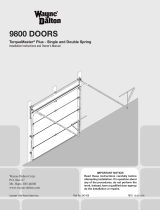 Wayne-Dalton 9800 User manual
Wayne-Dalton 9800 User manual
-
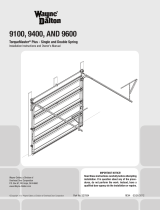 Wayne-Dalton AND 9600 User manual
Wayne-Dalton AND 9600 User manual
-
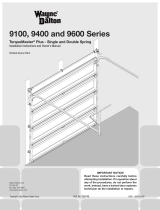 Wayne-Dalton TORQUEMASTER 9100 User manual
Wayne-Dalton TORQUEMASTER 9100 User manual
-
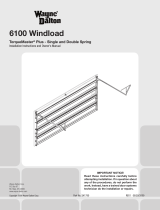 Wayne-Dalton 6100 User manual
Wayne-Dalton 6100 User manual
-
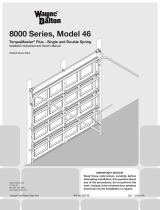 Wayne-Dalton 8000 Series User manual
Wayne-Dalton 8000 Series User manual
-
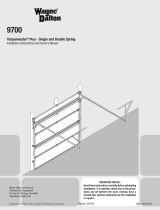 Wayne-Dalton Water Pump 9700 User manual
Wayne-Dalton Water Pump 9700 User manual
-
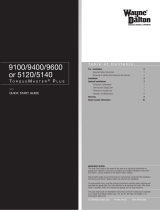 Wayne-Dalton 9400 User manual
Wayne-Dalton 9400 User manual
-
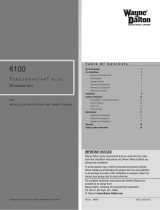 Wayne-Dalton Garage Door Opener 6100 User manual
Wayne-Dalton Garage Door Opener 6100 User manual
-
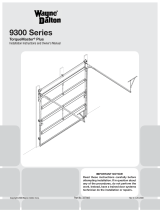 Wayne-Dalton 9300 User manual
Wayne-Dalton 9300 User manual
Other documents
-
Suncast B501824 User guide
-
EVOTECH PRN014778 User manual
-
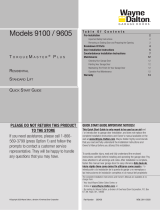 Wayne Dalton WD215WK97 Installation guide
Wayne Dalton WD215WK97 Installation guide
-
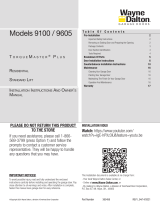 Wayne Dalton WD9100CW107 Installation guide
Wayne Dalton WD9100CW107 Installation guide
-
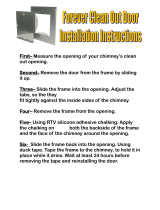 The Forever Cap FCOD1313 Installation guide
The Forever Cap FCOD1313 Installation guide
-
 SnapSafe 75416 User manual
SnapSafe 75416 User manual
-
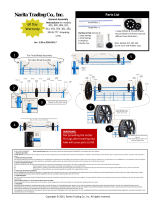 Load Runner 032BL Operating instructions
Load Runner 032BL Operating instructions
-
 Steel-Line Steel-Line Series-AA Aluminium Installation guide
Steel-Line Steel-Line Series-AA Aluminium Installation guide
-
RCA Door L User manual
-
Steel-Line Series B Aluminium Installation guide






























